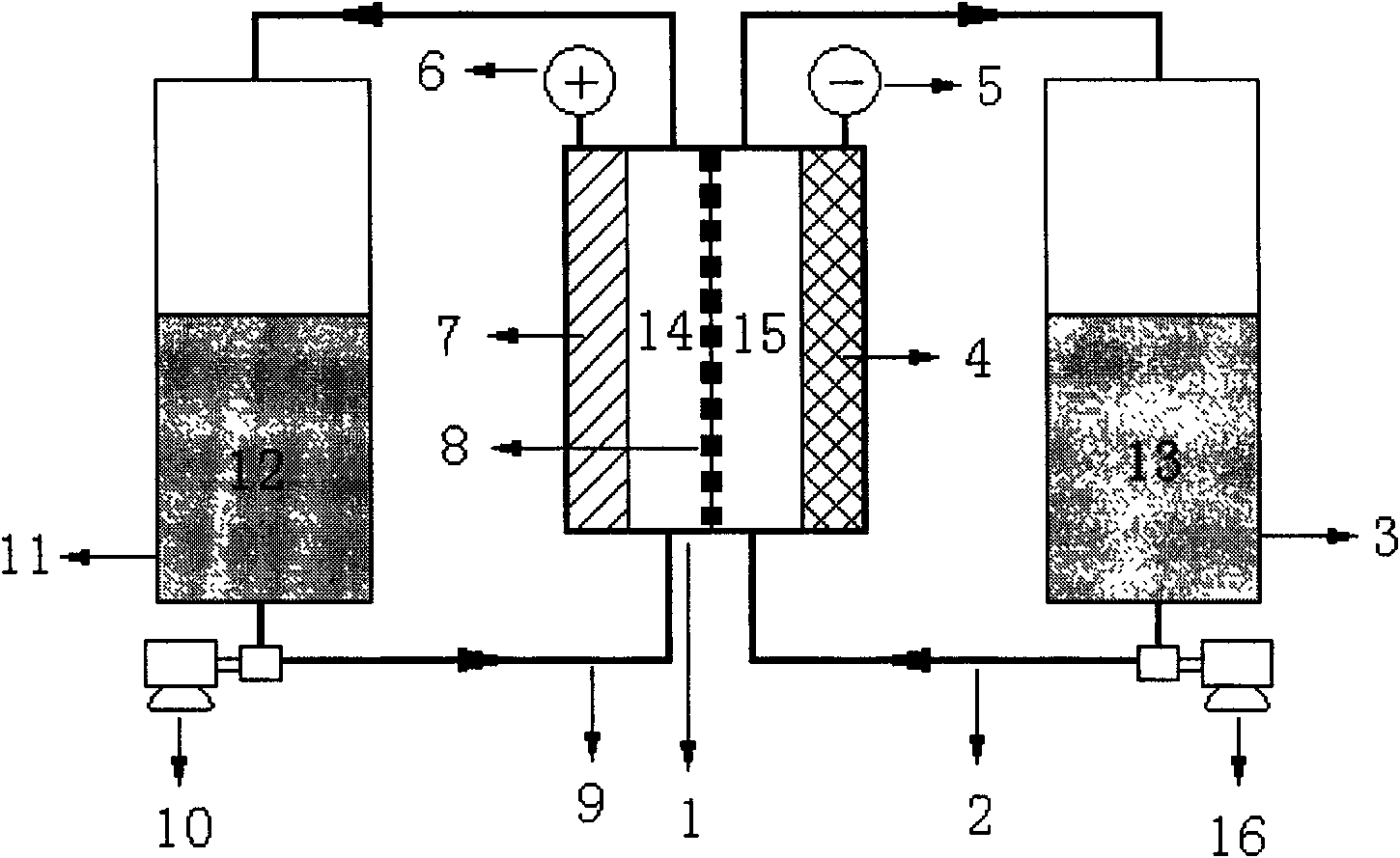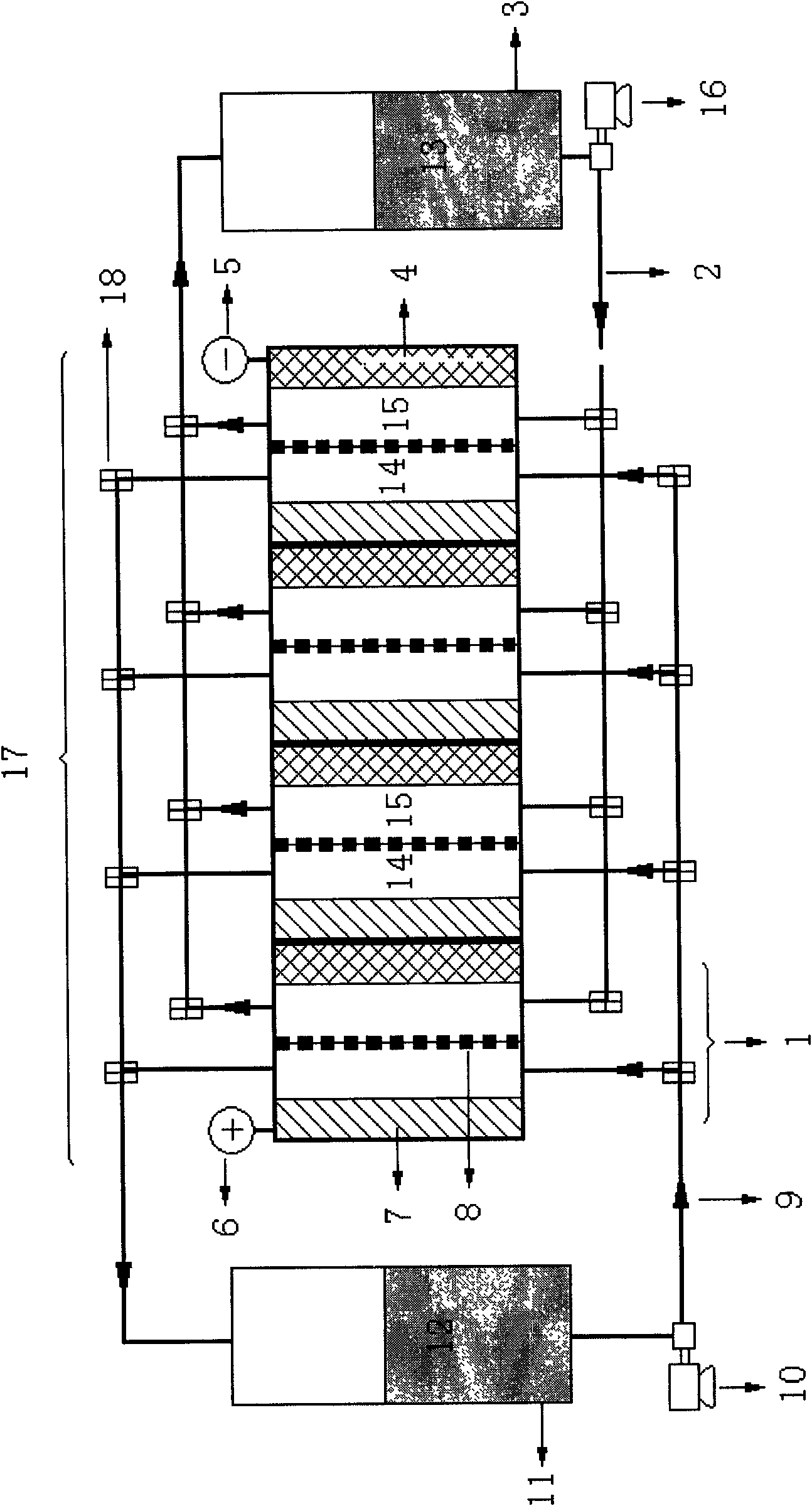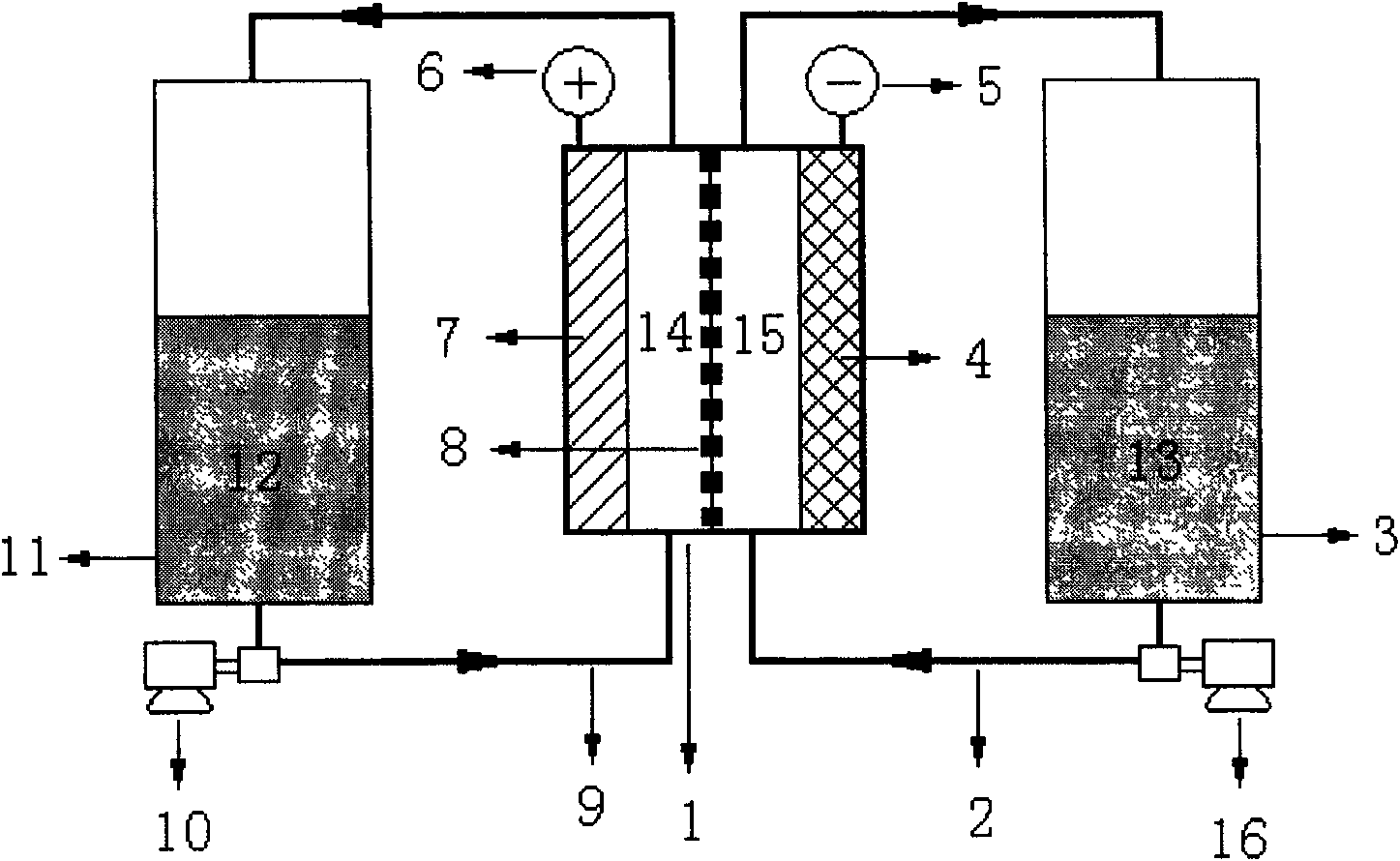Water-soluble organic couple redox flow battery
A liquid flow battery, water-soluble technology, applied in the direction of fuel cells, secondary batteries, battery electrodes, etc., to achieve the effect of eliminating the possibility of dendrites, low cost, and simple manufacturing process
- Summary
- Abstract
- Description
- Claims
- Application Information
AI Technical Summary
Problems solved by technology
Method used
Image
Examples
Embodiment 1
[0021] at 5cm 2 graphite felt for the positive electrode 7 catalytic electrodes, 50ml of 3M H 2 SO 4 The +0.5M ferro-titanium reagent solution is the anode electrolyte 12, wherein the ferro-titanium reagent is a water-soluble organic active material. at 5cm 2 Graphite felt as the negative electrode 4 catalytic electrodes, 50ml of 3M H 2 SO 4 +1.0M V 2 (SO 4 ) 3 The solution is negative electrode electrolyte 13, where V 3+ / V 2+ It is an inorganic water-soluble pair. The Nafion 117 cation exchange membrane is used as the diaphragm 8 between the positive electrode 7 and the negative electrode 4, and the magnetic circulation pump is used as the positive electrode infusion pump 10 and the negative electrode infusion pump 16, so that the positive electrode electrolyte 12 and the negative electrode electrolyte 13 are circulated through the positive electrode 7 and the negative electrode respectively. negative electrode 4 surface. The open circuit voltage of the battery is...
Embodiment 2
[0023] at 5cm 2 graphite felt for the positive electrode 7 catalytic electrodes, 50ml of 3M H 2 SO 4 +0.5M sodium hydroquinone sulfonate solution is the anode electrolyte 12, wherein sodium hydroquinone sulfonate is a water-soluble organic active substance. at 5cm 2 PbSO 4 / Pb lead-acid battery plate is the negative electrode 4, 50ml of 3M H 2 SO 4 The solution is the negative electrode electrolyte 13, in which the solid electrode pairs PbSO 4 / Pb is an active pair. The Nafion 117 cation exchange membrane is used as the diaphragm 8 between the positive electrode 7 and the negative electrode 4, and the magnetic circulation pump is used as the positive electrode infusion pump 10 and the negative electrode infusion pump 16, so that the positive electrode electrolyte 12 and the negative electrode electrolyte 13 are circulated through the positive electrode 7 and the negative electrode respectively. negative electrode 4 surface. The open circuit voltage of the battery is ab...
Embodiment 3
[0025] at 5cm 2 Graphite felt as the positive electrode 7 catalytic electrodes, 50ml of 3M H 2 SO 4 +1.0Ce 2 (SO 4 ) 3 The solution is the catholyte 12, where Ce 4+ / C 3+It is an inorganic water-soluble pair. at 5cm 2 Graphite felt as the negative electrode 4 catalytic electrodes, 50ml of 3M H 2 SO 4 +0.5M dihydroxyhydroquinone solution is the negative electrode electrolyte 13, wherein dihydroxyhydroquinone is a water-soluble organic active substance. The Nafion 117 cation exchange membrane is used as the diaphragm 8 between the positive electrode 7 and the negative electrode 4, and the magnetic circulation pump is used as the positive electrode infusion pump 10 and the negative electrode infusion pump 16, so that the positive electrode electrolyte 12 and the negative electrode electrolyte 13 are circulated through the positive electrode 7 and the negative electrode respectively. negative electrode 4 surface. The open circuit voltage of the battery is about 1.1V, at...
PUM
 Login to View More
Login to View More Abstract
Description
Claims
Application Information
 Login to View More
Login to View More - R&D
- Intellectual Property
- Life Sciences
- Materials
- Tech Scout
- Unparalleled Data Quality
- Higher Quality Content
- 60% Fewer Hallucinations
Browse by: Latest US Patents, China's latest patents, Technical Efficacy Thesaurus, Application Domain, Technology Topic, Popular Technical Reports.
© 2025 PatSnap. All rights reserved.Legal|Privacy policy|Modern Slavery Act Transparency Statement|Sitemap|About US| Contact US: help@patsnap.com



